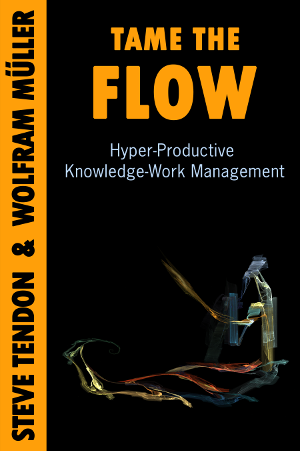Steve Tendon Publishes ‘Tame the Flow’: A New Book about Hyper-Productive Knowledge-Work Management
 Steve Tendon, together with co-author Wolfram Müller, published a new book entitled: “Tame the Flow. Hyper-Productive Knowledge-Work Management.”
Steve Tendon, together with co-author Wolfram Müller, published a new book entitled: “Tame the Flow. Hyper-Productive Knowledge-Work Management.”
The book takes inspiration from management approaches that have been successfully applied to the field of software engineering, and extrapolates them to cover general knowledge work management, with the objective of reaching hyper-productivity.
The book examines the history of software hyper-productivity, and the advent of organizational patterns as a means for both understanding and designing hyper-productive organizations.
In particular, the patterns of Unity of Purpose and Community of Trust are seen as foundational for achieving hyper-productivity.
Several topics are explored, from the point of view of how they support the creation of a Unity of Purpose and the building of a Community of Trust. Such topics include:
- The nature of software
- Management’s Profound Understanding of Software Development
- Management’s Responsibility and Learning Organization
- Discovery Driven Planning
- Budgets Considered Harmful
- The Incremental Funding Method
- Throughput Accounting
- The Thinking processes
- Critical Roles, Leadership and More
- Creating a Shared Vision at the Team Level
A new way to manage knowledge work is presented. It is based on the Kanban Method, which is enhanced and extended with elements from Constraints Management, the original Kanban used in the Toyota Production System, and the Incremental Funding Method. The objective of the method is to enhance the flow of knowledge work through an organization. Particular attention is given to the topic of Improving While in the Flow, whereby it is shown how common cause variation can be detected in knowledge processes, and used as a basis for directing improvement initiatives.
The last part of the book extends Scrum with elements from Constraints Management, and how organizational change can be fostered via the Theory of Constraints.
More information can be found at the books home page: Tame the Flow.
